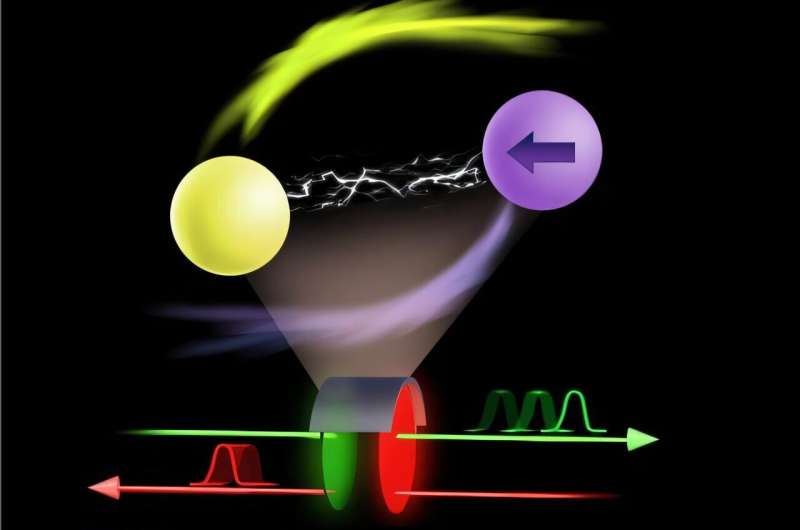Have you ever imagined a world where light can travel at different speeds depending on the direction? Researchers at the University of Manitoba and Lanzhou University are opening the door to this fascinating reality with their recent discovery in cavity magnonics. Join us as we explore how they’re reshaping our understanding of light and its applications in technology!

The ability to change how fast light travels could revolutionize technology, particularly in areas like high-speed communication and quantum information processing. Traditional methods for controlling light speed, like electromagnetically induced transparency (EIT), rely on quantum interference. While effective, these methods only allow for reciprocal control—meaning light behaves the same way whether it’s coming or going.
Now, a breakthrough study has introduced nonreciprocal control of light speed using a unique cavity magnonics device. This innovative system brings together two types of quanta: photons (the building blocks of light) and magnons (which relate to the spin of electrons in specific materials). This exciting development holds immense potential for future technologies.
Published in Physical Review Letters, the research details how this new technique can significantly enhance microwave communication, neuromorphic computing, and quantum circuits. “The idea began back in 2019 when my team aimed to establish effective coupling in hybrid cavity magnonics systems,” shared Can-Ming Hu, head of the dynamic spintronics group at the University of Manitoba.
Hu’s earlier studies focused primarily on manipulating the light’s amplitude in one direction. However, light also has a crucial aspect known as phase, which is the position of the light wave in its cycle. Hu and his team wondered if they could manipulate this phase in a nonreciprocal way while keeping the amplitude consistent in both directions.
Breaking through conventional beliefs governed by the Kramers-Kronig relations, the researchers discovered that nature is surprisingly lenient. By establishing a hybridized system combining the photon mode of a dielectric resonator with the magnon mode of a magnetic yttrium iron garnet (YIG) sphere, they made a groundbreaking discovery.
The unique properties of magnetic materials, which possess intrinsic chirality that influences the direction of spin precession, aided the team in creating a controllable system that allowed light to travel at different speeds based on direction. This dynamic interaction was made possible through a microstrip that facilitated this dissipative coupling.
To test their invention, the researchers sent microwave pulses into their device from two different directions. The results were nothing short of remarkable: the method enabled distinct delays and accelerations of the light pulses, demonstrating nonreciprocity for the first time.
“Pulses of light and microwaves are fundamental carriers of information across various fields, including signal communications and quantum processing,” noted Jerry Lu, a junior Ph.D. student involved in the study. This exciting discovery indicates that light can travel both ways in their system, but intriguingly at varying speeds—a first in this area!
While the findings from this study hold great promise, Hu and his colleagues acknowledge there’s still work to do. “The time delays and advancements we’ve achieved are still modest,” he admitted. “Our next steps are to refine our techniques to make these effects more pronounced.” Their long-term vision includes exploring different scenarios where this technology could thrive.
More information:
Jiguang Yao et al, Nonreciprocal Control of the Speed of Light Using Cavity Magnonics, Physical Review Letters (2025). DOI: 10.1103/PhysRevLett.134.196904.
© 2025 Science X Network
If you would like to see similar science posts like this, click here & share this article with your friends!

